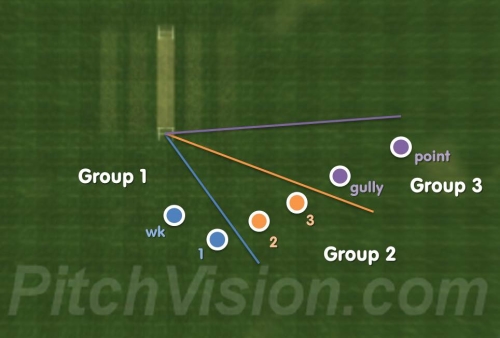Is This the Truth About Slip Catching?
This is a guest article from James Hughes. James is a student and cricket coach conducting research into how to improve slip catching.
Catches win matches.
Fielding provides more opportunity to influence the game than any other role. In a Twenty20 you have 120 balls to influence the game as a fielder, yet as a batter you could be out first ball.
But, unlike batting, current coaching advice is based on anecdotal evidence from past players or the senior member at your club. I have been told numerous and varying methods of where and when to look at slip as a junior myself.
You might hear,
"watch the ball when at first slip"
or
"look at the edge of the bat when wider than 1st"
This has been passed down from coach to player, for as long as we know.
Paul Collingwood, one of the best close catching fielders with over 700 career catches, talks about the huge part the eyes play within slip catching positions. Finding the truth about small differences is what makes coaching exciting.
So, over the next 12 months, my research into fielding will advance current knowledge surrounding the mental and visual side of catching.
The science of catching
Multiple studies have looked into the physiological demands of fielding, but very little has been done to explore the visual strategies used within slip catching positions.
Using modern state of the art eye tracking equipment I will find out visual strategies used by elite level county academy players. Here is what I think I will find:

I expect group 1 to be 'trackers' of the ball as it is watched all the way into the hands from the bowler. Then there is some variation at 2nd slip and wider with the 'fixation point' around or in front of the batsman because of the greater deflection type of catches taken in these positions.
The nature of the catch standing at first slip is a finer edge and a smaller change in direction of the ball path.
Wider of 1st slip, a fixation point may exist due to the need to pick up the direction, speed and ball path as early as possible. This may allow the brain to process these cues to catch the ball when it is travelling at greater after the ball is hit. Other information such as swing from bowlers release point, crowd distractions, or internal emotional thoughts could provide irrelevant information, overloading the mind, and impact on the result of the catch at 2nd or 3rd slip.
I hope the results from the study will provide coaches with a more evidence-based approach to coaching slip catching. The results will also provide information regarding ways to train slip catching.
In future articles I will talk more about my research, it's results and the practical methods you can use as a coach or player to improve catching.
You can keep up with James via twitter @JamesHughes49 and subscribe to the free PitchVision Academy newsletter for future articles from James here
- Login to post comments

